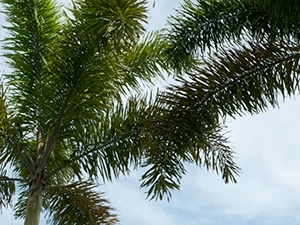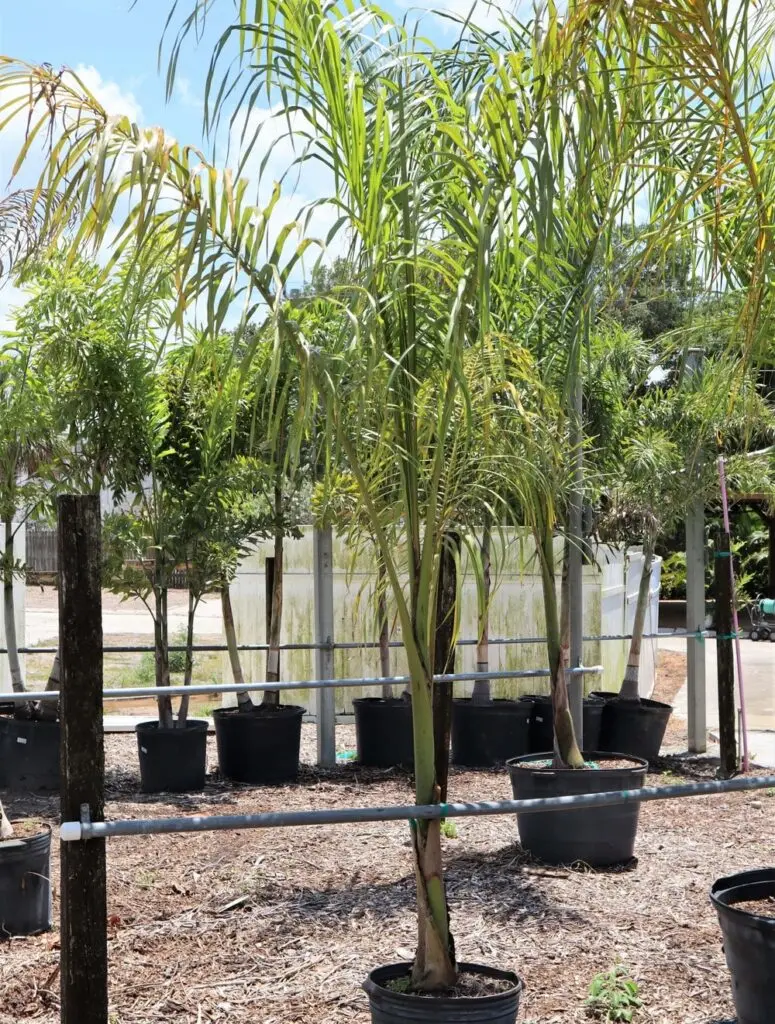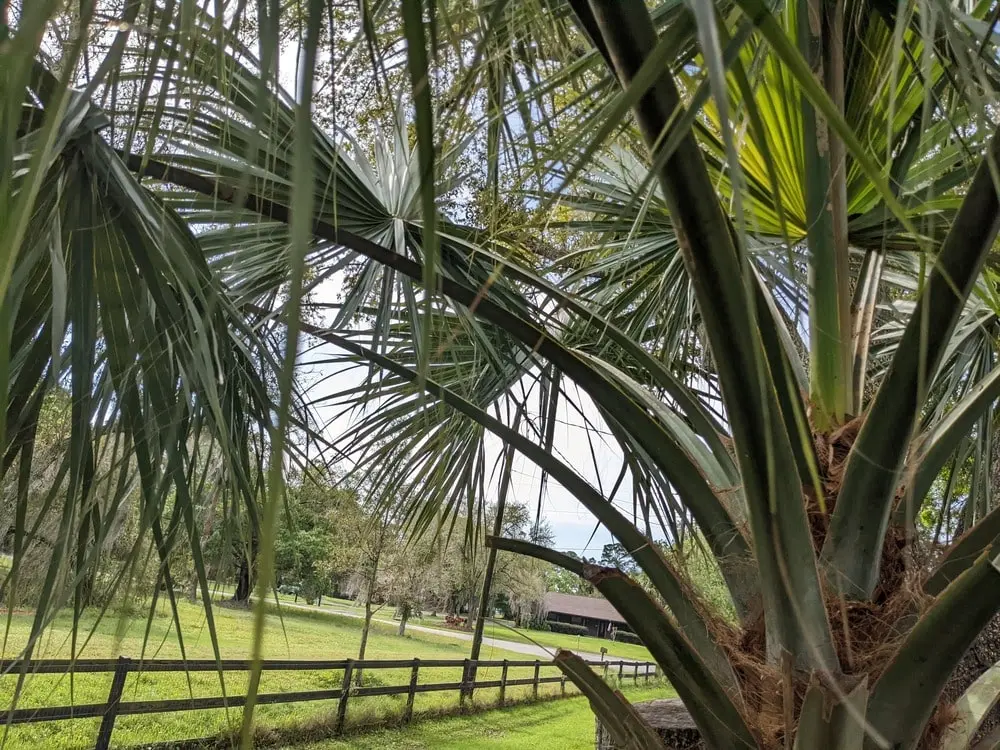by Amanda Rose Newton
Florida’s warm climate is a paradise for growing a variety of palm trees, making them a staple in both tropical and subtropical landscapes across the state.

Palms are not only aesthetically pleasing but also add a touch of the tropics to any garden. This guide will cover the basics of how palms grow, the signs of a healthy palm, nutrient needs, understanding leaf loss, spotting new growth, palm fruits, and a look at some common ornamental and native Florida palms.
Palms and How They Grow
Palms are a unique group of plants, belonging to the family Arecaceae. Unlike deciduous trees, palms grow from a single growth point at the top of their trunk, known as the meristem. This growth pattern means that palms do not become wider with age like other trees. Instead, they grow taller as the meristem produces new leaves and pushes the older leaves outward and downward.
Signs of a Healthy Palm
A healthy palm tree will exhibit several key characteristics:
- Vibrant green leaves: The fronds should be a rich, deep green, without yellowing or browning, which can indicate nutritional deficiencies or disease.
- Upright growth: A healthy palm will have a strong, upright growth habit. Drooping or leaning can be signs of distress or poor health.
- Firm trunk: The trunk should be firm and robust, without any soft spots, cracks, or signs of decay.
Signs of Palms Needing Nutrients
Nutrient deficiencies are common in palms grown in Florida as they tend to be heavy feeders of micronutrients.
Here are a few common symptoms:
- Yellowing leaves: Often a sign of a lack of essential nutrients such as nitrogen, potassium, or magnesium.
- Fringed or scorched leaf edges: Indicating a potassium deficiency.
- Stunted growth: A general sign that your palm is not receiving enough of one or more nutrients.
- “Frizzle top”: This condition is characterized by fronds that appear frizzled, withered, and brown, often starting at the tips and working inward. It’s primarily caused by a deficiency in manganese, a crucial nutrient for palms.
Many of these issues can be prevented by using a fertilizer designed especially for palms.
Losing Leaves at the Bottom
It is normal for a palm tree to shed its oldest leaves as new growth emerges from the top. This natural process allows the palm to focus energy on new, healthy growth. However, excessive leaf loss or yellowing of several leaves at once could indicate a problem.
Spotting New Growth
New growth in palms is a positive sign, indicating the tree is healthy and thriving. Look for emerging fronds from the crown of the tree. These new fronds should be vibrant and green as they unfurl.
Palm Fruits
Many palms produce fruits that range in size, color, and edibility. Palm fruits are not only an important food source for wildlife but can also add to the ornamental value of the tree. However, be aware that some palm fruits can be messy and may require regular cleanup.
Palms for Your Florida Landscape
Florida’s climate supports a wide range of ornamental palms, including:
Royal Palm (Roystonea regia): Known for its impressive height and majestic appearance.

Coconut Palm (Cocos nucifera): Iconic for its coconuts and tropical flair, this palm performs the best beachside.
Queen Palm (Syagrus romanzoffiana): Valued for its graceful fronds and smooth trunk.
Foxtail Palm (Wodyetia bifurcata): Known for its fronds that resemble fox tails, this palm tends to be more cold-tolerant than the other palms on the list.
Pygmy Date Palm (Phoenix roebelenii): Small in stature but big in presentation, this palm is great for smaller yards and in or around pool cages.
Areca Palm ( Dypsis lutescens): Also known as golden bamboo palm, this smaller palm is great as a natural privacy fence.
Bottle Palm (Hyophorbe lagenicaulis): With its bulbous base, the bottle palm is an attention grabber.
Silver Bismarck (Bismarckia nobilis): Native to Madagascar, this elegant palm features silvery foliage.
Native Florida Palms
Several palms are native to Florida, offering natural beauty and adaptability:
Sabal Palm (Sabal palmetto): Also known as the cabbage palm, it is the state “tree” of Florida and is known for its resilience and utility.

Saw Palmetto (Serenoa repens): Noted for its fan-shaped leaves and importance to wildlife.
Growing palms in Florida can be a rewarding experience, offering a lush, tropical feel to any landscape. By understanding the basics of palm growth, recognizing the signs of health and nutrient needs, and choosing the right species for your area, you can ensure that your palms thrive for years to come. Whether you opt for a native species or an ornamental variety, palms are sure to add beauty and value to your Florida garden.




